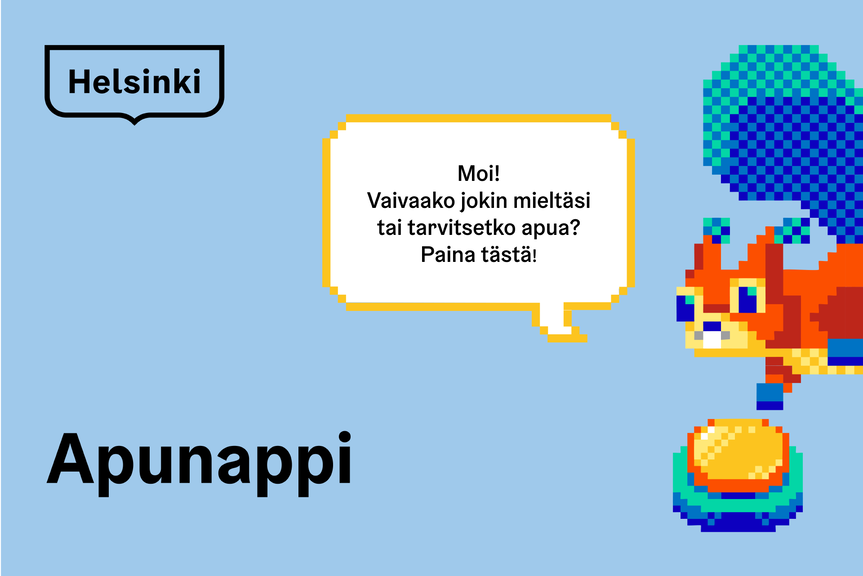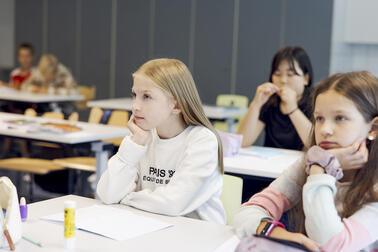
This low-threshold service channel Apunappi can be found in the Aula portal on learners' computers. Pupils and students can use it if they have something weighing on their mind or wish to talk about something with a safe adult. The service is currently available in Finnish but will be launched in English and Swedish during the 2025–2026 school year.
Apunappi helps find services
With Apunappi, the child or young person does not need to know where to turn to for help with a particular issue. Instead, they simply need to select a topic, and the application will guide them to choose from available services. Apunappi messages are sent through a data-secure, encrypted connection.
Contact requests received through Apunappi are directed to the student welfare staff of the child or young person’s school, the low-threshold Mental Health Service Unit Mieppi or the Ohjaamo advice and guidance service for young people. For upper secondary level students, the options also include mental health and substance abuse nurses and youth social work.
Aiming to lower the threshold for contact
– The Apunappi service was developed at the request of children and young people themselves. With Apunappi, they can easily get in touch with professionals who can help them in different situations. We hope that Apunappi will lower the threshold for contacting us at an earlier stage, says Regional Unit Manager for Student Welfare Mervi Tulppo.
Pupils and students can use Apunappi to send messages 24/7, including during their free time. Messages are responded to during the day, within 1 to 5 working days during the school year. Follow-up measures, such as a meeting, are agreed upon with the learner.
Pupils in grades 7 to 9 also have access to the student welfare chat, which is open from Monday to Wednesday at 12.00–15.00. According to Tulppo, the chat has been well received, with young people submitting 150–200 contact requests per month through it.
The Apunappi service does not replace any of the existing ways that pupils and students have of contacting the student welfare services of their school or health care and social welfare services but rather supplements them.
– You can still come talk to school social workers, psychologists and nurses directly. The most important thing to keep in mind is that you do not need to struggle alone, Tulppo encourages young people.
Cross-division cooperation enabled a ‘one-stop shop’ service
Apunappi was developed through multi-professional cooperation involving several professionals in the fields of student welfare, family and social services and information management from the City of Helsinki Education Division and the Social Services, Health Care and Rescue Services Division. The cooperation has been described as very effective and rewarding by those involved.
– Together, we have developed a service channel based on the ‘one-stop shop’ principle, where customers do not need to know where to access the service that they need. This is of paramount importance, especially in services for children and young people, to keep the threshold for seeking and receiving help low, says Head of Education Division Satu Järvenkallas.


